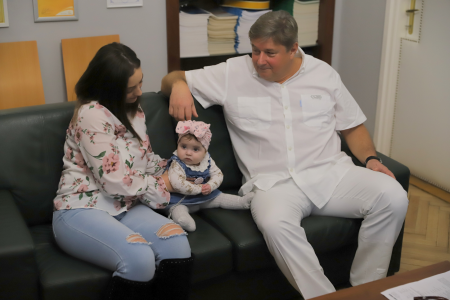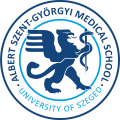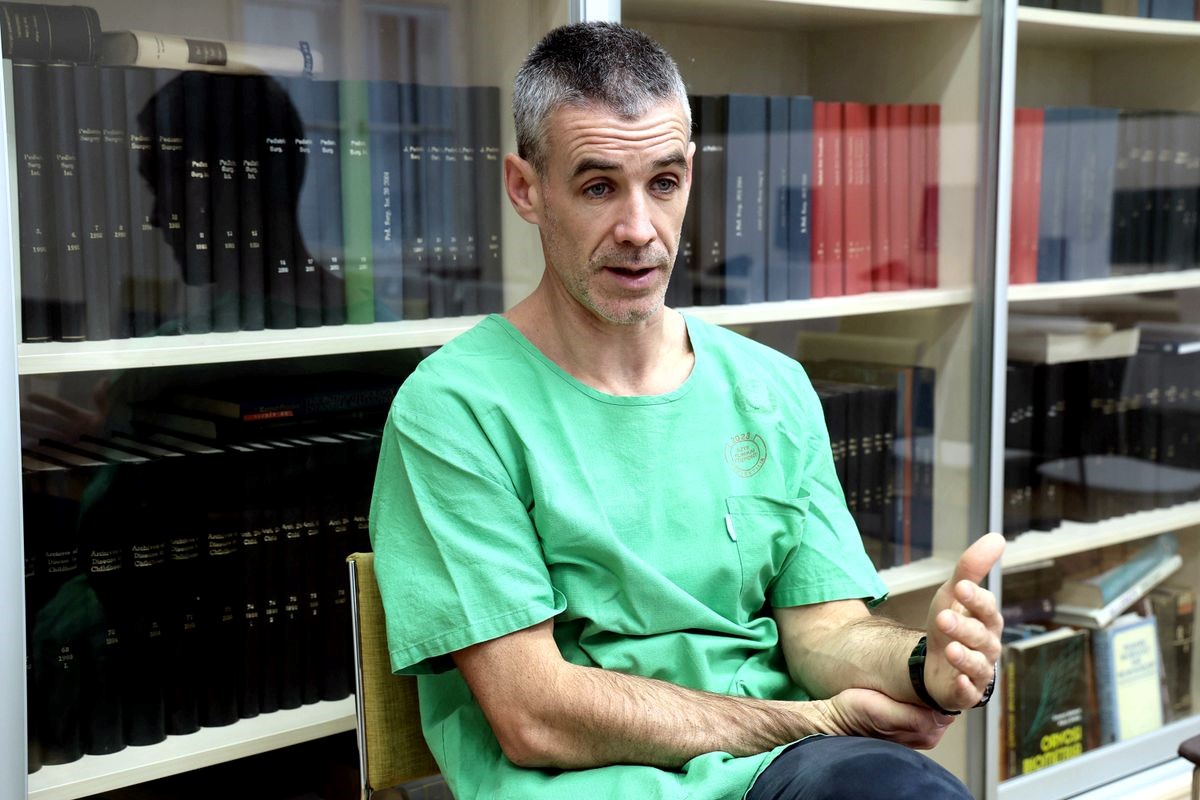University of Szeged
Albert Szent-Györgyi Medical School
Foreign Students' Secretariat
Your Education. Our Mission.

Life of six-month-old baby girl saved by Prof. Dr. László Rovó, Rector of SZTE
The surgical reconstructive intervention developed in recent years by Prof. László Rovó, Rector of the University of Szeged and his team of specialists is unique worldwide.
The surgical reconstructive intervention developed in recent years by Prof. László Rovó, Rector of the University of Szeged and his team of specialists is unique worldwide. The innovative procedure, which is now performed on newborns and infants up to a few weeks old, is a one-step solution for children with congenital or acquired difficulty breathing due to upper airway stenosis. The procedure, also known as slide laryngotracheoplasty, recently helped a Romanian girl, just six months old.

’Maria was born prematurely. She required ventilation, which caused her to develop laryngeal narrowing. In this condition, which is called laryngeal stenosis, the diameter of the larynx is reduced for some reason, so that less air can get through. The progression of the narrowing is partly determined by its extent and partly by the speed at which it develops. The problem can be the result of several different factors in adults and children, but the consequence is the same in all cases: less air/oxygen gets into the lungs. Significant breathing difficulties caused by stenosis often require tracheotomy, as was the case with Maria. However, tracheotomy tends to make it more difficult for children to live a full life, as a curved plastic tube is inserted into the trachea to provide direct airflow, bypassing the nose and the throat. This is used to replace the intubation tube in the case of prolonged mechanical ventilation, as the long-term use of the tube can cause damage to the adjacent tissues. Following the tracheotomy, the girl's parents sought a solution to avoid this. This is how they found the Department of Otorhinolaryngology and Head-Neck Surgery at the University of Szeged, where I am proud to say we have been performing a one-step procedure for several years now. This intervention is considered innovative worldwide,’ said Prof. Dr. László Rovó, Head of the Department and Rector of the University of Szeged. This one-step surgical solution provides immediate stable airways with good voice quality and swallowing function without tracheostomy, stenting or graft implantation.

Prof. Dr. László Rovó and his team have been working on this surgical solution for decades. The procedure, which has been developed step by step, has benefited greatly from rapidly advancing technology and science. In order to put the theoretical knowledge into practice, they started to cooperate with a number of internationally renowned medical experts and institutions. Within the university, they formed a well-established team with the Department of Paediatrics and the Department of Anaesthesiology and Intensive Care. Thanks to this, they can now successfully perform the procedure on newborns, infants of a few weeks and older children.
’It has taken us many years to test this intervention, aided by the continuous development of our theoretical knowledge and the evolution of surgical techniques, technology and science. As a result, we now know exactly how to treat each patient in order to provide them with a targeted solution,’ said the Rector of the University of Szeged.

After the little girl was brought to Szeged and underwent the necessary tests, it turned out that besides laryngeal stenosis caused by cricoid cartilage malformation, she had two other stenoses as well, resulting from the previous surgical interventions. These closed the airways in three different locations down to the lower part of the trachea. This problem was solved by the aforementioned one-step procedure performed by the professional team in Szeged.

The Department of Otorhinolaryngology and Head-Neck Surgery plays an important role not only in Hungary but also internationally in the lives of people with congenital or acquired upper airway stenosis. Their aim is to further develop existing procedures. Prof. Dr. László Rovó emphasized that the current and ever-expanding network of contacts of the University of Szeged has contributed greatly to this and will provide even more opportunities in the future, not only in the field of research and treatment, but also in the field of education.






